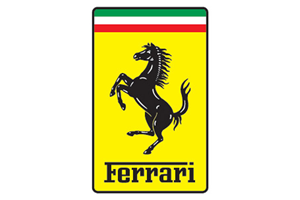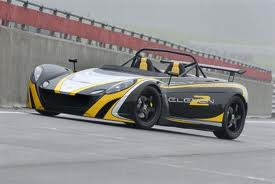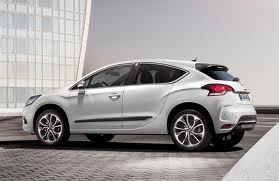


This edition of the Ferrari F430 4.3 V8 is the 6 speed / Manual version and was first brought out in 2004. This was at around the same time as the introduction of the 2005 Bugatti Veyron 8.0 litre W16 and the 2005 SSC Aero SC 8T 6.3L.This particular Ferrari F430 has a 4308cc Naturally Aspirated Petrol powerplant with 8 cylinders in a V formation.
The F430 shares its Petrol V8 engine configuration with the likes of the 2023 Dodge Challenger SRT Demon 170 and the 2023 Ferrari SF 90 XX Spider 4.0 V8 Turbo. If you're looking for other fast cars which share the F430's Rear Wheel Drive, Coupe combination then how about the 1982 Fiat X1/9 1.5 8V or the 1965 Aston-Martin DB6 1965.
Weighing in at 1435 kgs (3163 lbs) this makes the Ferrari F430 4.3 V8 in the same weight category as the 2023 Lotus Emira First Edition i4 2.0 Turbo or the give or take 50kg.
In terms of power the 4308cc 32V V8 engine produces 483 bhp (360 kW) @ 8500 rpm similar to the 2024 Ford Mustang Dark Horse 5.0 V8 (500 bhp) or the 2023 Porsche Cayenne S 4.0 V8 Turbo (467 bhp).
The Naturally Aspirated V8 throws out 343 lb-ft (465.0 Nm) @ 5250 rpm placing it with cars of similar torque performance figures such as the 2023 Porsche Boxster Spyder RS 4.0 982 (332 lb-ft) or the 2022 Porsche 911 Carrera T 3.0 Turbo PDK 992 (332 lb-ft).
If one combines the weight with power or torque performance for the Ferrari F430 you can get a better idea of it's real world performance.
![Mercedes SLS AMG GT 6.2 V8 - [2012] image Mercedes SLS AMG GT 6.2 V8 - [2012] image](/editionimages/1163.jpg)
The 2012 Mercedes SLS AMG GT 6.2 V8 (359.8 bhp per ton) has similar Bhp Per Ton stats as the Ferrari F430.
The Ferrari F430 has a Power to weight ratio of 336.5 bhp per ton and 239.0 lb-ft per ton. Bhp Per Ton figures of the 2004 F430 competing with the 2012 Mercedes SLS AMG GT 6.2 V8 (359.8 bhp per ton) or the 1994 Lamborghini Diablo SE 5.7 V12 (359.3 bhp per ton).
If you agree with the late great Carroll Shelby then arguably an even better indicator of potential performance, Torque. Use weight as well and you end up with - Torque per ton, with the Ferrari F430 generating around 239.0 lb-ft per ton. If you're curious as to what other cars have as much torque to weight then look no further than the 1970 Ford Falcon 4th Gen 429 Cobra Jet V-8 4-speed (263.9 lb-ft per ton) or the 2012 Mercedes CLS Class 63 AMG Shooting Brake (263.9 lb-ft per ton).
With a 0-60mph time of 3.90 secs or a 0-100km/h (0-62mph) of 4.0 secs, this made the Ferrari F430 4.3 V8 as fast as the 2022 Volkswagen-VW Golf R Performance 2.0 Turbo (3.90 secs) the 2022 BMW 2 Series M2 3.0 Twin Turbo G87 Steptronic (3.90 secs) the 2022 Porsche 911 Sport Classic 3.7 Turbo 992 (3.90 secs) the or the 2021 Porsche Taycan 4S Cross Turismo (3.90 secs). This Ferrari F430 4.3 V8 is also faster than the 3996 Bentley Continental GT 4.0 V8 Turbo Convertible (4.00 secs) the 2022 Lotus Emira First Edition 3.5 V6 Supercharged Auto (4.00 secs) the 2021 Audi e-tron GT Quattro (4.00 secs) the and the 2020 Maserati Levante Trofeo 3.8 V8 Twin Turbo (4.00 secs).
When talking about the performance of the Ferrari F430 on the drag strip it can reach a quarter mile in an estimated 11.75 secs @ 116.4 mph. Similar performance down the quarter mile can be found with the the 2007 Lotus Elise SC 1.8 (11.70 secs), the 2003 Jaguar XJ R 4.2 V8 Supercharged (11.70 secs), and the 2009 Porsche Boxster 3.4 Spyder 987 (11.70 secs).
Modern performance cars are often artificially restricted to 155mph. The 2004 version of the Ferrari F430 4.3 V8 has a maximum speed of 196mph.
If maxing out your car on the AutoBahn is your thing and you're wondering what's faster than the 2004 Ferrari F430 4.3 V8 then how about the 2019 Bentley Flying Spur 6.0 W12 Twin Turbo (207 mph), the 2018 Bentley Continental GT 6.0 W12 Convertible (207 mph), or the 2017 Bentley Continental GT 6.0 W12 Turbo (207 mph).










Maserati GranTurismo MC 4.7 V8
Engine: Naturally Aspirated Petrol | 4691cc 32v V8
Top Speed: 187 mph
0-60mph: 4.50 seconds

Citroen DS4 200 1.6 Turbo
Engine: Turbo Petrol | 1598cc 16v St4
Top Speed: 234.9 kph
0-100kph: 8.0 seconds



















